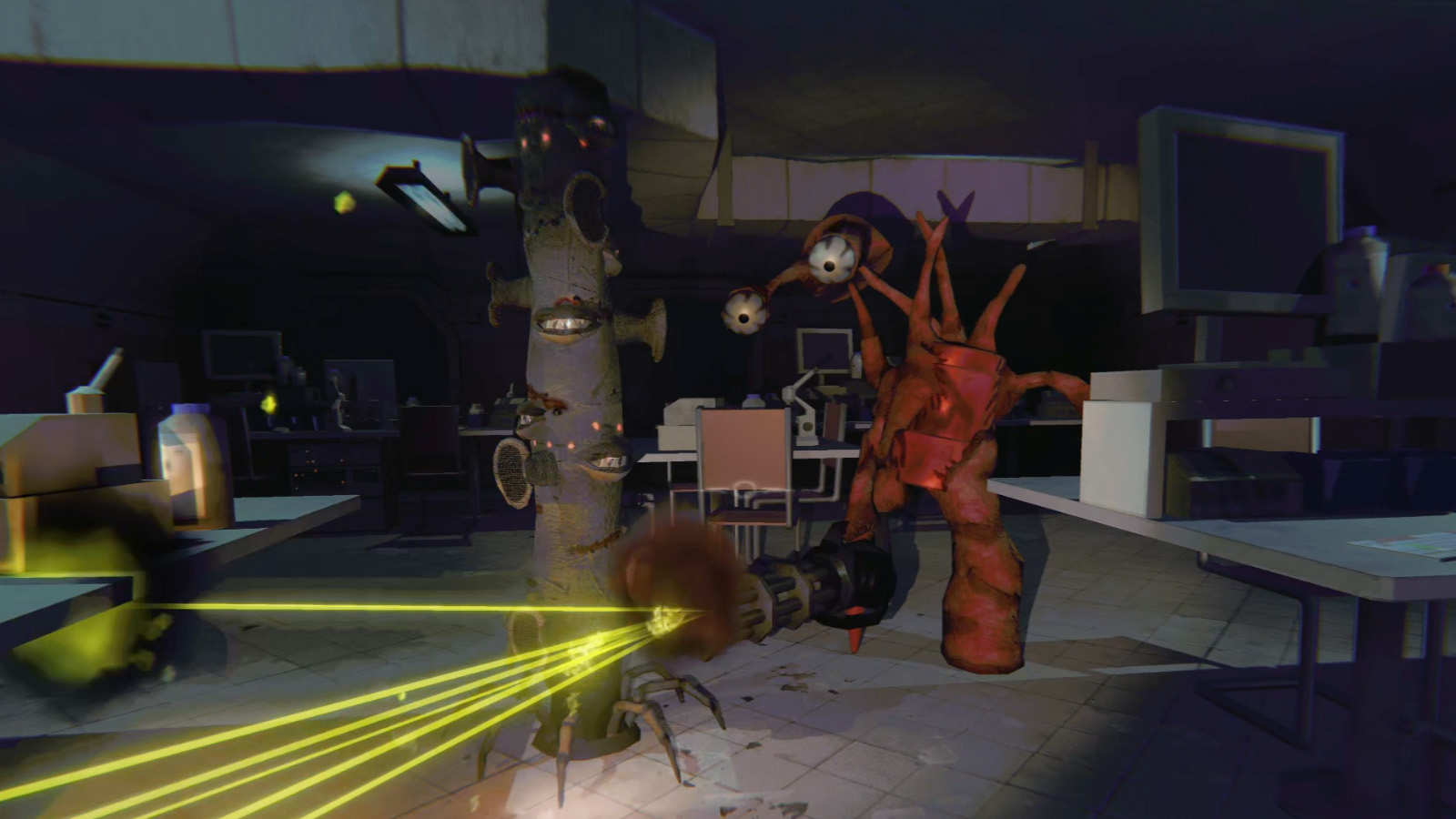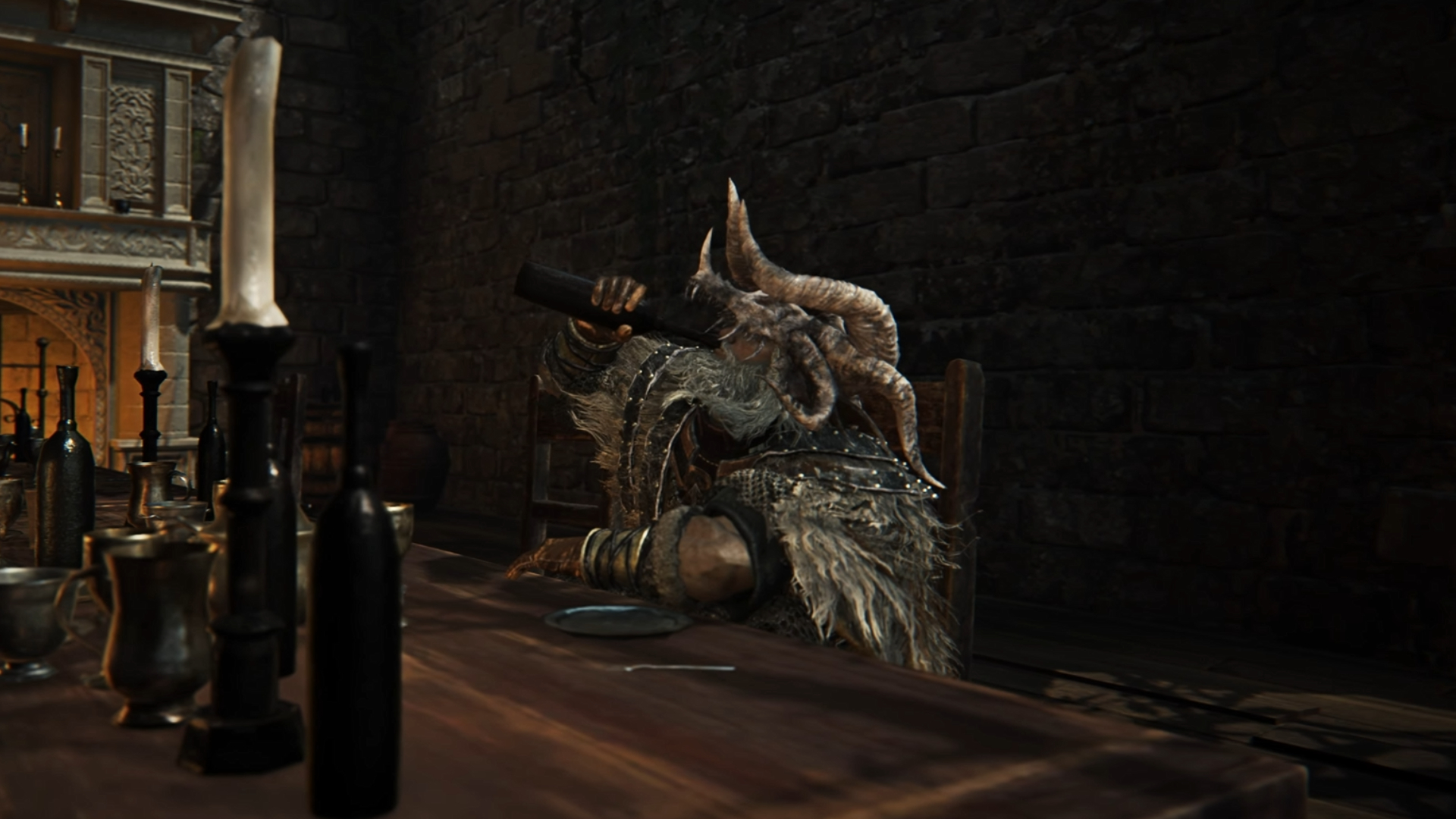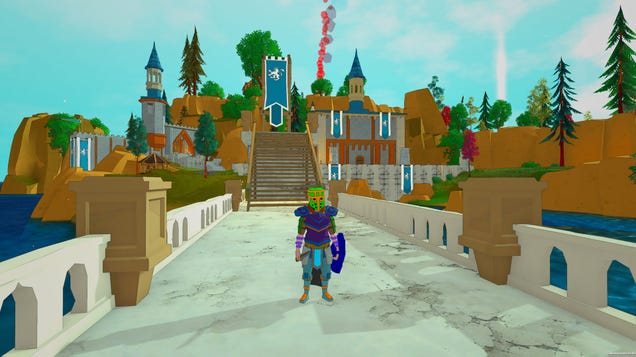
Everybody knows Lady Dimitrescu is tall, but I was still shocked to see just how large she loomed over me from a first-person angle in VR. Resident Evil Village VR captured my undivided attention even beyond my fascination for the tall vampire lady, offering a fresh perspective on a nearly two-year-old game I have played a dozen times over. From the robust tutorial before you start playing to the many ways you can customize the controls for the most comfortable experience, Resident Evil Village’s VR mode is no afterthought, but rather a well-crafted and exciting way to experience an already excellent game.
Nothing has been watered down in the transition to VR: you’ll endure Ethan’s rescue mission from start to finish. That said, this mode doesn’t quite give you access to everything Resident Evil Village offers – the timed challenge Mercenaries mode is not supported in VR (probably for the best, given that it’s all about moving quickly), and the modifiers you may have already unlocked in the non-VR mode, such as weapon attachments and upgrades, are not transferable to VR mode and you will have to unlock all those items once again. This obviously isn’t a big deal for anyone playing Resident Evil Village for the first time, but as someone who has unlocked and upgraded all of my weapons over the course of several playthroughs, that was disheartening. Interestingly, Village VR does offer new weapon attachments, such as a bayonet for the M1897, which you can purchase from The Duke after destroying a certain number of wooden goats scattered throughout the village.
What we said about Resident Evil Village
Roaming the streets of Resident Evil Village is like visiting a disturbing and deadly Disneyland, where every attraction is a house of horrors. I got just as big a thrill out of revelling in its frenzied violence as I did retracing my steps through the gradually revealed recesses of its sizable village setting to uncover the darkest story secrets of its monstrous main cast. Boss fights are a bit of a letdown but the great variety of enemies throughout keeps things tense, especially on Hardcore mode. The fact that it’s very much a throwback to the fast-paced action of Resident Evil 4 also means it largely takes a step back from the slow-burn scares of Resident Evil 7’s excellent opening hours, which may well disappoint those who prefer more psychological dread to blowing off heads. But if you have an itch for action-heavy survival-horror, then Resident Evil Village will scratch it like a fistfull of Lady Dimitrescu’s freakish fingernails. – Tristan Ogilvie May 5, 2021
Score: 8
Read the full Resident Evil Village Review.
Unlike the third-person mode available in The Winters’ Expansion last year, Resident Evil Village mostly flourishes in VR. Exploring this remote European village, I’ve never felt more immersed in the action. From using my hands to move shelves and barricade doors, to reloading my firearms physically, to drowning Ethan’s hand in First Aid Med, Resident Evil Village VR captures a level of realism that is simply unachievable in traditional 2D first-person games.
Village VR looks beautiful; you can easily get lost roaming its maps and taking a closer look at all the little details in the environment. Castle Dimitrescu often had me doubling back to examine all the paintings and photographs on the wall. That said, because the action is all up in your face, it is easy to spot the low-res textures on some things while exploring, most notably the rotten food that is littered throughout the village.
Nothing has been watered down in the transition to VR.
Resident Evil Village VR’s controls have all of the expected options, allowing you to play either standing or sitting, each with its own pros and cons. Playing standing provides easier access to your arsenal, but usually meant I couldn’t play for as long without fatigue, while sitting down extended my play time but could cause some uncomfortable angles when throwing pipe bombs or using the scope to aim with a sniper rifle. Customizing the control scheme is helpful for either method, allowing you to swap between options like physically reloading weapons manually or having that be handled automatically. I opted for a hybrid of the two as it was really fun mimicking the motions of using a real firearm, but in situations where a lot of action was occurring and things got hectic, it was convenient to have my guns automatically reload.
Knife combat has also been greatly improved; what was once limited in movement and stiff with a controller now feels extremely smooth and responsive as you take actual swipes at your enemies and crates alike. (Or you can punch every crate you see; that’s pretty effective, too.) The more interesting thing I discovered when playing with the knife, however, is that you can throw it without worrying about collecting it after because it immediately respawns in your holster a few seconds later. That makes for a handy way to kill enemies and destroy boxes from afar without using ammo.
Accessing Ethan’s arsenal is done with your hands, pulling weapons and ammo from different areas of your body. While the idea is immersive, the different ways you have to access your weapons can be a bit cumbersome. Sometimes I went to grab a land mine only to pull out my flashlight instead, while other times I would reach for my shotgun only to grab my sniper rifle. I wish there was a hybrid option that allowed me to pull up a quick menu with four preset weapons of my choice, similar to what Resident Evil 4 VR offered, but that doesn’t seem feasible given the lack of a D-Pad on PS VR2’s new Sense controllers.
While I would sometimes forget Village has a block ability since I never had to use it during the base game (even when playing on the challenging Village of Shadows difficulty), it was my new best friend in Village VR. With the number of enemies coming at you all at once, plus the high stress of trying to get avoid damage while simultaneously reloading your weapon, blocking became a very useful tool I hadn’t previously relied on.
Dual wielding makes it a lot easier to get out of tight situations.
Blocking may have felt new, but one feature that’s actually exclusive to VR is the ability to dual-wield weapons. This makes it a lot easier to get out of tight situations, or to simply bust open some lycan skulls faster. Weapons that were once used with two hands, like the shotgun, can also be wielded with one hand with the pistol held in the other. That’s super convenient if you need to get a quick shot off at an enemy close to you, but it comes at the cost of more recoil decreased aim. There’s a lot of fun experimentation to be done with the combinations of weapons alone, which makes for a welcome new level of freedom.
However, some tension and jump scares I encountered in the original game were not as scary in VR. Sure, a few moments still left me in fight or flight mode, such as Lady Dimitrescu chasing me in her castle or when I encountered that one specific section in House Benevieto. But most of the jump scares can be entirely missed if you aren’t looking in the right direction at the right time, which I learned the hard way the first time Ethan encounters a lycan. It doesn’t put a major damper on things, but it can still be a bit disappointing.
Thankfully a lot of the tension and scares from Resident Evil Village come from the combat itself, which there is plenty of. There are a handful of sections where Village throws dozens of enemies at you at once, and the VR changes to combat mean you can now easily drop your gun when you meant to reload it, or forget to cock your shotgun after firing a shell. Similar to what I said in my review of Resident Evil 4 VR, this new combat style comes with a severe learning curve, which can sometimes be frustrating, especially in later sections. But trust me when I say that it’s worth mastering, making the challenge all the more rewarding to overcome once you get the hang of it.
Village VR shares some frustrations with Resident Evil 7’s VR mode.
Village VR unfortunately shares some frustrations with the VR mode for Resident Evil 7 as well – most notably, the animations that occur when enemies grab you or knock you down. Not only do they drag out the length of combat encounters, but they also put you into some extremely weird and awkward viewing, especially since you can easily look in another direction while the animations play out.
On the flipside, Resident Evil Village’s puzzles are much more fun to solve and interact with while hands-on in VR. These sections could feel a bit tedious and repetitive in 2D when you are just following cumbersome button prompts, but Village VR has you physically interacting with objects by doing things like flipping a switch to restore power to a room, or moving a statue to solve a puzzle, which makes them feel like more than just busywork.








